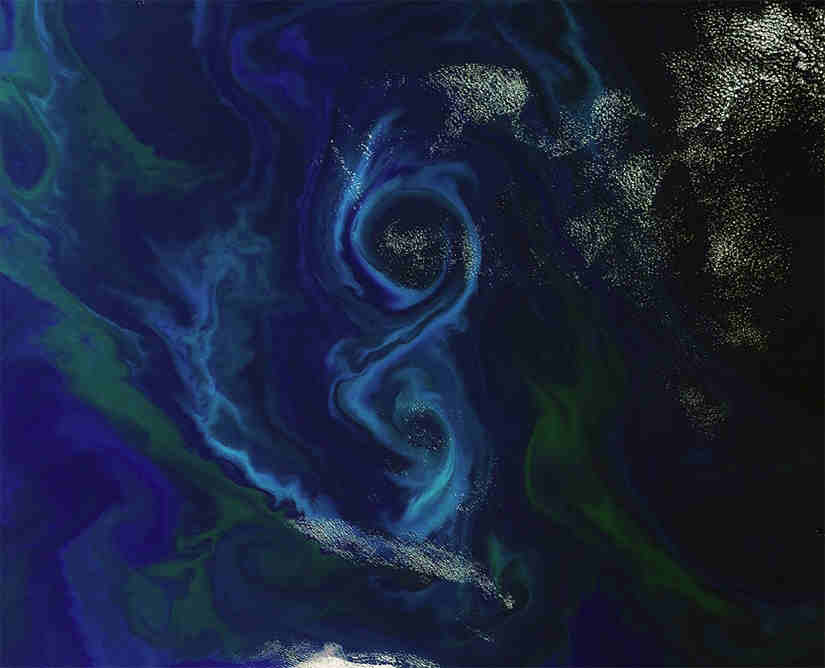It looks like you're using an Ad Blocker.
Please white-list or disable AboveTopSecret.com in your ad-blocking tool.
Thank you.
Some features of ATS will be disabled while you continue to use an ad-blocker.
4
share:
This is an beautiful picture of phytoplankton creating a figure-8 shape
around the Falkland Islands.
Nature is always creating beautiful things.
news.discovery.com...

around the Falkland Islands.
Nature is always creating beautiful things.
news.discovery.com...
Jan. 14, 2012 -- It's summer in the Southern Hemisphere, when mineral-rich water rises up from the deep ocean to feed phytoplankton near the surface, forming vast blooms in brilliant swirls of blues and greens visible from space.
In this image, taken by ESA's Envisat satellite on Dec. 2 2011, a phytoplankton bloom forms an enormous figure-8 in the southern Atlantic about 370 miles (600 km) east of the Falkland Islands.

The Falklands -- a self-governing British Overseas Territory -- are an archipelago 290 miles (460 km) east off the southern tip of South America.
Phytoplankton are marine microorganisms that form the base of the ocean's food chain, and play an important role in the production of oxygen and removal of carbon dioxide from the atmosphere. Different types of phytoplankton show up as different colors in satellite images, depending on their chlorophyll pigmentation.
reply to post by isyeye
an amazing piccy isyeye. thanks for that so star to you.
after reading the content with regards to this occuring in the summer, it is in contrast to the british isles when winter is the main blooming time for seaweeds and fruits of the sea i am led to understand. slightly out of context i know but i watched a documentary on this subject and had the urge to post the difference.
regards fakedirt.
an amazing piccy isyeye. thanks for that so star to you.
after reading the content with regards to this occuring in the summer, it is in contrast to the british isles when winter is the main blooming time for seaweeds and fruits of the sea i am led to understand. slightly out of context i know but i watched a documentary on this subject and had the urge to post the difference.
regards fakedirt.
new topics
-
Paradox of Progress
Ancient & Lost Civilizations: 4 hours ago -
Joe Biden gives the USA's Highest Civilian Honor Award to Hillary Clinton and George Soros.
US Political Madness: 6 hours ago -
Winter Storm
Fragile Earth: 7 hours ago -
Biden Face Planted Somewhere
Politicians & People: 8 hours ago -
A great artist and storyteller, for kids of all ages
General Entertainment: 9 hours ago
4
